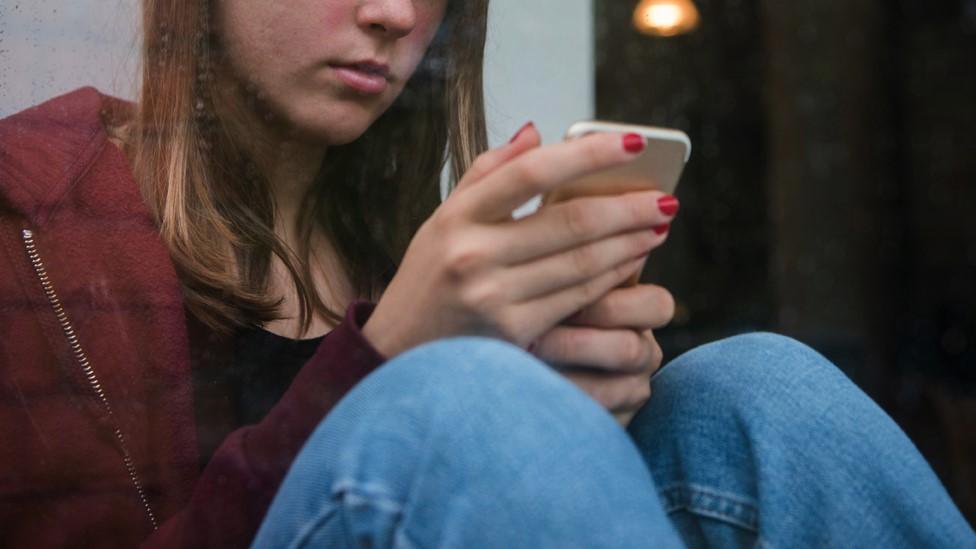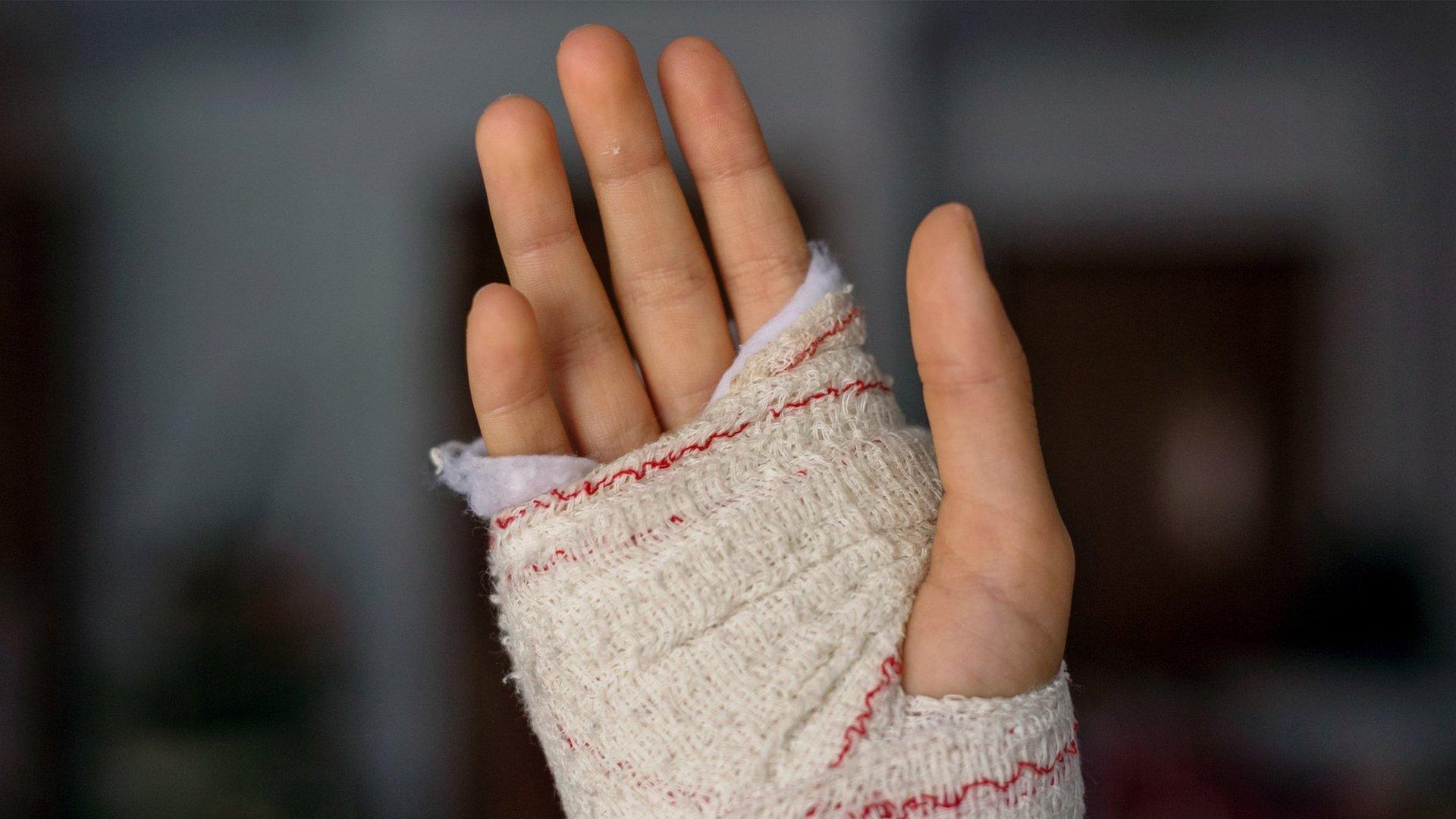Self-harm guidance to include advice for schools and prisons
- Published

Elsa felt her school didn't have enough counsellors or staff to give her the help she needed as a teenager
Staff in schools and prisons in England and Wales are for the first time to be included in draft guidance on how to identify people who have self-harmed.
The experts behind it said everyone was responsible for tackling the growing problem of self-harm - not just mental health professionals.
A mental health charity said the guidance would empower teachers to support young people.
It warned that more mental health support teams in schools were needed.
These are the first new guidelines on self-harm produced by the National Institute for Health and Care Excellence (NICE) for 11 years, and a public consultation on the guidance will run until 1 March., external
Self-harm is when somebody intentionally damages or injures their body to try to cope with emotional distress or to feel in control, but there are many reasons why people do it.
One in five girls and one in 10 boys aged between 17 and 19 have self-harmed or attempted suicide, according to a major survey from 2017, external. And among 11 to 16-year-olds, 7% of girls and more than 3% of boys are affected - with those with mental disorders more likely to have self-harmed.
But experts say the figures could be an underestimate because few go to hospital and the problem is often hidden.


Elsa and friends campaign for funding for mental health hubs
'I felt knocked down'
Elsa Arnold, 20, from east London, was 15 when she started self-harming after being bullied at school.
"I really struggled with being a teenager. It was the combination of the pressure at school, fitting in and constantly being picked on," she says.
Her school referred her to adolescent mental health services but she was refused help for not being unwell enough, before she got even worse.
"You don't believe you deserve help anyway and when you're not given it, you just feel knocked down."
She developed depression and anxiety and, four months later, was referred again. Eventually she opted for private treatment.
Young people say they are often told they have to reach crisis point before they can qualify for support, but Elsa says this is "so wrong".
"Better support would have changed my whole mental health story as a teenager," she says.
Elsa is now at university, and says she doesn't feel as trapped or as misunderstood as she was at school. She is campaigning for funding for support hubs for 11 to 25-year-olds across England, which offer support to young people when their mental health problems first emerge.

Prof Nav Kapur, an adviser on the guidelines and professor of psychiatry and population health at the University of Manchester, said: "Self-harm can occur at any age and present to any setting.
"This new guideline is an opportunity to make things better, particularly from the point of view of assessment and aftercare."
The guidance will be expanded to be relevant to people who work in educational settings and criminal justice settings, as well as non-health and social care professionals.
It calls for anyone who is not a mental health specialist and spots a case of self-harm, to organise a psychosocial assessment as soon as possible, which should be carried out by a mental health professional.
These assessments try to understand why that person has self-harmed and ensures they receive the care they need, while giving information to family members about their condition.
Dr Paul Chrisp, from NICE, said: "It is important that our committee has made recommendations for education and criminal justice settings.
"Data in the past few years has shown that people working within these sectors would benefit from clear guidance about how they should help someone who is self-harming.
"These guidelines set out a way for every person who self-harms to be able to get the support and treatment they need."
Emma Thomas, from young people's mental health charity YoungMinds, said the pandemic "had a disproportionate impact on this age group" and more young people were self-harming as a way of coping.
"Prior to the pandemic, one-third of schools did not provide any in-school mental health support, so we are calling on the government to invest in the further rollout of these teams and other schools-based mental health support."

How to spot self-harm
Look out for unexpected cuts and bruises
Watch for low self-esteem and someone who seems withdrawn
Ways to avoid self-harm
Try talking about your feelings to a friend, family member or volunteer
Try calming breathing exercises or other things you find relaxing to reduce feelings of anxiety
Write down your feelings - no-one else needs to see it
Distract yourself by going out for a walk, listening to music, or doing something else that interests you
Treatments for self-harm
Talk to a health professional such as a GP and they will discuss the best options, including self-help or support groups.
For adults, the new guidance recommends offering cognitive behavioural therapy or similar, that is specifically for adults who self-harm.
For children and young people with significant emotional difficulties who frequently self-harm, the guidance says dialectical behaviour therapy adapted for adolescents, external should be considered.
- Published3 June 2021

- Published16 February 2021

- Published2 February 2021

- Published30 January 2021